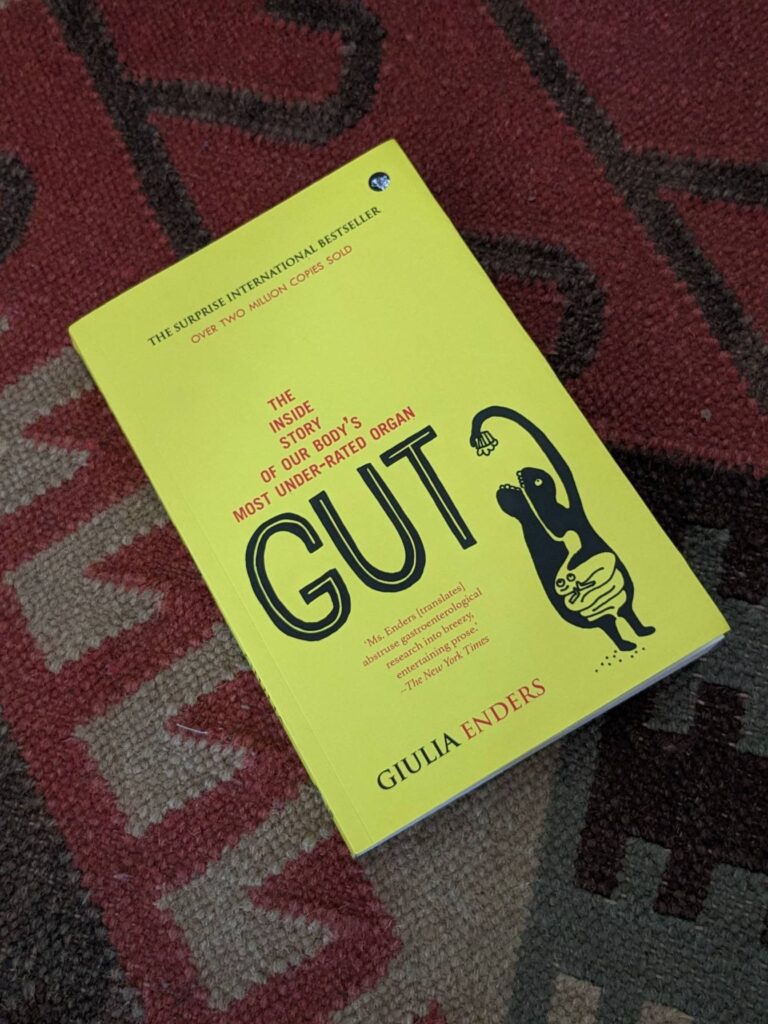Giulia Enders
When you think of it, it’s quite amazing how emotions we might attribute to the mind find metaphors related to another part of the body – ‘gut feel’, ‘butterflies in the stomach’, ‘sh*t your pants’, ‘pit in your stomach’ and so on. The metaphors are based on actual physical sensations, and so on hindsight, it is quite obvious that the gut and the brain have quite a connection.
If we consider our development as an embryo, it goes along three ‘tubes’ – cardio-vascular, nervous, and the gut systems. But unlike the heroes of the first two – the heart and the brain, who have attention and literature, we rarely even think about the gut unless we have an ailment. But it is amazingly complex, with links to even something like mental health, and that’s what makes “the inside story of our body’s most underrated organ” a really interesting read.
Giulia Enders does an excellent job of breaking down the complexities, much like some of her favourite bacteria that find a mention in the book! The book is not just accessible but entertaining too, with fun illustrations popping up on a regular basis. However, despite not sounding like a boring thesis, the book is full of not just information, but insight. This goes all the from the scenes of the behind like how does pooing work, and the kinds of poo, to behind-the-scenes walkthroughs of important and not-so-known processes like the gut structure and how organs transport food, to practical advice on everything from allergies, things like reflux and constipation, and diets, to cleanliness, and the MCU equivalent of the microbes in our gut.
As someone who has been at the mercy of clueless gastro-intestinal practitioners, I’d say that her stated aim of making information available to a broad audience is in itself worthy of an applause. An absolutely fascinating read, even if you’re only vaguely interested in this inner piece of ours!
Things I learned
– The gut accounts for two-thirds of our immune system
– There are inner and outer sphincters, representing our unconscious inner world and our consciousness respectively. Their understanding of the respective spaces, and their ‘conversations’ and relationship determine when you fart, or when you have to just go!
– Squatting is indeed the best way to defecate, as it leads to a nice, straight intestinal tract. This is scientifically proven in the book
– Saliva is basically filtered blood! It also contains a painkiller stronger than morphine, called opiorphin. Because the mouth is super sensitive thanks to more nerve endings than any other part of the body
– The stomach is shaped like ‘Quasimodo’ so that water and food can be treated separately
– Lactose intolerance is not an allergy, it’s a deficiency – the body not having the enzyme to break the two sugar molecules. In 75% of the population, the gene for digesting lactose begins to switch off as we grow older because we are no longer reliant on mother’s milk
– Rumbling tummy is the ‘migrating motor complex’ at work. And it’s more from the small intestine. Housekeeping when that and the stomach are empty. If something enters, the process stops. In this context, regular snacking isn’t a good idea, and needs separation of at least 5 hours
– Solve constipation with dietary fibres, fluids, pro and prebiotics
– The extraordinary story of the sea squirt, which navigates the oceans, finds a good place to settle down, and then proceeds to eat its own brain!
– Irritable bowel syndrome could be caused by micro inflammations, bad gut flora or undetected food intolerances (but as you might have experienced, doctors pooh pooh patients as hypochondriacs or malingerers!)
– The brain can receive information from the gut at the insular cortex. Bud Craig’s theory is that human self awareness originates in the insular cortex. It consists of three hypothesis – this part gets info from all over the body and organises it to form an image – a representation of our feelings. The second part of the hypothesis is that the purpose of the brain is to create movement – for the best life possible. The third part of the hypothesis is that to make the best possible movement, the images are important and the brain and the gut are both qualifiers for the central role in giving this information
– Gut bacteria vary by geography too – climate, food etc all play a part
– “Genes are possibilities. Genes are information. Genes can be dominant, forcing features on you or they can just offer their abilities for us to use or not. But most of all, genes are plans.” Lovely!
– Our collective gut bacteria have 150 more times genes than a human. Who are we really made of!
– Gut bacteria are of 3 types- bactericides, prevotella, ruminococcus.
– Haem is needed for many things, like production of blood. Its lack is a genetic defect that has been seen in Romania – results in symptoms that include garlic intolerance, sensitivity to sunlight, and red urine. Vlad!
– Yoghurt is nothing but milk pre-digested by bacteria. Buy ones that use bacteria that produce dextrorotatory lactic acids rather than levorotatory.
– Lactobacillus Reuteri can significantly lower cholesterol and lipid levels, and increase HDL
– A toxoplasmata infection causes our immune system to activate an enzyme IDO which breaks down the substance the invaders like to eat and forces them to enter a dormant state. But this eatable is also an ingredient needed to produce serotonin. This potentially causes suicidal behaviour.
-Eat prebiotic dishes

